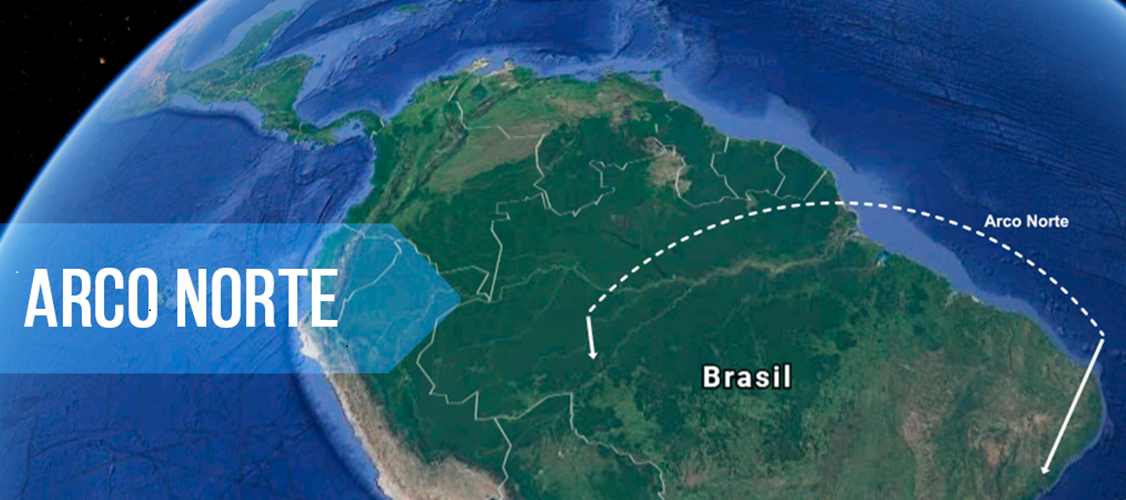
Pará state aims to become top hub for Brazil’s agricultural exports
Mar, 01, 2024 Posted by Gabriel MalheirosWeek 202409
Pará state aspires to become the primary hub for Brazil’s agricultural exports, surpassing the ports of Santos in São Paulo and Paranaguá in Paraná. In 2023, nearly half of the 193 million tonnes of grains exported by the country were harvested in the Midwest, a region bordering the south of Pará. The state anticipates that the $38 billion in infrastructure and logistics investments slated for the next four years under the Federal Government’s Growth Acceleration Program (PAC) will create the conditions for an increasing share of goods to leave the country through ports in the so-called Northern Arc.
According to the Amazon-based port terminals association Amport, 37% of the agricultural exports transported in bulk – such as corn and soybeans – involved the association’s nine ports, with six located in Pará. Fifteen years ago, Northern Arc‘s share of exports was only 14%. If the PAC investments come to fruition, the association expects this share to reach 50%. “We will become the top export hub because we will offer the lowest costs,” says Flávio Acatauassú, president of Amport. The export route in Pará will include river courses, which represent half of the fuel consumption of rail and only 5% of that of road transport.
The chart below combines grain export data for the ports of Altamira, Belém, Santarém, and Vila do Conde, all located in Pará state, between January 2022 and December 2023. The data is from DataLiner, a maritime intelligence service developed by Datamar.
Pará State Grain Exports | Jan 2022 – Dec 2023 | WTMT
Source: DataLiner (click here to request a demo)
For Acatauassú, the new PAC has recognized the importance of inland waterway transport and the geographical suitability of Pará as an export route. Of the 45 transportation projects planned for the state, 22 are related to ports and waterways.
Plans for the Tocantins River include dredging in Itupiranga, the locks construction near the Tocantins border, and the placement of navigation signs from the river’s mouth to the neighboring state. The Tapajós River is being evaluated as part of a transportation plan from Santarém to Itaituba, near the BR-163 highway in Pará. The road between Mato Grosso do Sul and Mato Grosso to Santarém is already a viable alternative to redirect cargo up north.
Ports in five different Pará locations will receive investments. Most of these projects involve leasing terminals for loading and unloading grains or minerals, which Pará produces and exports via the Northern Arc infrastructure. However, Acatauassú calls attention to the fact that these cargoes are only exported after a journey on highways or railways.
In Pará’s case, a specific railway is deemed essential: Ferrogrão. The project for the 933 km railway connecting Mato Grosso to the port of Miritituba in Pará was proposed in 2014 by agribusiness giants like Bunge and Amaggi. Since then, it has gathered support throughout the administrations of Dilma Rousseff, Michel Temer, and Jair Bolsonaro. However, construction has not yet begun.
In 2020, the Psol party filed a lawsuit in the Supreme Federal Court (STF) challenging a law that altered the boundaries of the Jamanxim National Park in Pará to make way for Ferrogrão. Minister Alexandre de Moraes granted an injunction in response to the request, and the process awaits trial. In September, the STF suspended its proceedings for six months to complete studies on the railway and its impacts. A decision on the contested project, supported by local entrepreneurs but contested by environmentalists, is expected in March.
“We strongly advocate for Ferrogrão to alleviate traffic in the BR-163 [a highway parallel to the proposed railway] and to reduce greenhouse gas emissions derived from grains transport from Mato Grosso,” says Alex Dias Carvalho, president of the Pará Federation of Industries (Fiepa). There are other strategic road projects in Pará outlined in the new PAC. For example, the construction of the BR-230 section between Medicilândia and Rurópolis will be crucial to boosting the state’s crops, including family farming and bioeconomy – technology-driven natural goods production – according to Carvalho. However, none of these projects are deemed more important than Ferrogrão.
Infrastructure expert Marcos Ganut, managing partner at consulting firm Alvarez & Marsal, contends that Ferrogrão’s project faces serious challenges. On the one hand, it faces competition from existing and under-construction railways. Second, it calls for a significant and yet uncertain investment. The project was initially budgeted at R$21 billion, which is currently being reviewed by the STF. In addition, the rail construction may deforest a yet unknown area. This is an important aspect of the project, especially given the current political climate that prioritizes environmental preservation.
The Ministry of Transportation stated that it is working on correcting the Ferrogrão project to find “an environmentally sustainable solution that meets the needs for commodity transportation through the Northern Arc.” Studies on the railway are expected to conclude within six months. Carvalho emphasizes that as COP30 approaches, it is time to demonstrate that economic development in the Amazon through transportation investments improves the business environment, creates jobs, and contributes to preservation.
Source: Valor Econômico
Click here to read the original text: https://valor.globo.com/publicacoes/especiais/para/noticia/2024/02/29/estado-pretende-ser-o-principal-corredor-de-exportacoes-do-agro.ghtml
-
Ports and Terminals
Nov, 11, 2022
0
Court bans “ghost ship” from docking in the Port of Suape
-
Other Cargo
Sep, 20, 2023
0
China dominates Brazil’s plastic imports with over 50%, reports ABIPLAST
-
Economy
Nov, 29, 2022
0
Brazil-Africa trade grows 36.9% in October, unable to catch up to past records
-
Ports and Terminals
Dec, 12, 2023
0
Maya Train railcar transported from Santos to Mexico in special logistics operation


